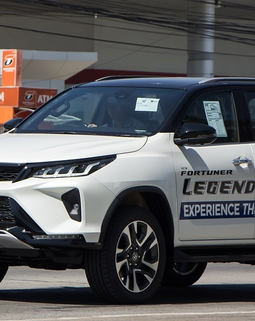The automotive industry is undergoing a profound transformation, driven by technological advancements, changing consumer preferences, and shifting market dynamics. As automotive original equipment manufacturers (OEMs) navigate this rapidly evolving landscape, there is a pressing need for adaptation and innovation. In this article, we explore the challenges facing automotive OEMs and the opportunities that exist for dealerships to thrive in a changing environment.
The Changing Automotive Landscape
The automotive industry is experiencing unprecedented change, fueled by trends such as electrification, autonomous driving, connectivity, and mobility-as-a-service. These trends are reshaping the way vehicles are designed, manufactured, distributed, and serviced, presenting both challenges and opportunities for automotive OEMs and their dealership networks.
Adapting to Technological Disruption
Technological disruption is reshaping the automotive industry, challenging traditional business models and driving the need for innovation. Automotive OEMs must embrace digital transformation, invest in research and development, and collaborate with technology partners to stay ahead of the curve and remain competitive in a rapidly evolving market.
The Rise of Electric Vehicles
The rise of electric vehicles (EVs) represents a significant shift in the automotive industry, with major implications for OEMs and dealerships alike. As consumer interest in EVs continues to grow, automotive OEMs must accelerate their electrification efforts, develop new EV models, and invest in charging infrastructure to meet demand and stay relevant in a rapidly changing market.
Enhancing the Customer Experience
In an increasingly digital and connected world, the customer experience has become a critical differentiator for automotive OEMs and dealerships. By leveraging data analytics, artificial intelligence, and personalized marketing strategies, OEMs and dealerships can deliver tailored experiences that resonate with consumers, drive loyalty, and increase sales.
Embracing Mobility Solutions
The rise of mobility-as-a-service (MaaS) presents both challenges and opportunities for automotive OEMs and dealerships. OEMs must adapt their business models to accommodate new mobility solutions, such as ride-hailing, car-sharing, and subscription services, while dealerships can capitalize on these trends by diversifying their offerings and exploring new revenue streams.
The Role of Dealerships in the Digital Age
In the digital age, automotive dealerships play a crucial role in the customer journey, serving as touchpoints for consumers throughout the purchase process. Dealerships must embrace digital technologies, enhance their online presence, and offer seamless omnichannel experiences to meet the evolving needs of today's digital-savvy consumers.
Maximizing Operational Efficiency
Operational efficiency is key to the success of automotive OEMs and dealerships in a competitive market. By optimizing supply chain management, streamlining production processes, and implementing lean principles, OEMs can reduce costs, improve productivity, and enhance profitability, while dealerships can optimize inventory management, streamline sales processes, and deliver faster, more efficient service to customers.
Investing in Talent and Training
Investing in talent and training is essential for automotive OEMs and dealerships to succeed in a rapidly changing industry. By hiring and developing skilled professionals, providing ongoing training and development opportunities, and fostering a culture of innovation and collaboration, OEMs and dealerships can build high-performing teams that drive success and fuel growth.
Conclusion: Navigating the Road Ahead
In conclusion, the automotive industry is at a crossroads, with significant challenges and opportunities on the horizon for OEMs and dealerships alike. By embracing technological innovation, adapting to changing consumer preferences, and prioritizing the customer experience, automotive OEMs and dealerships can position themselves for success in a dynamic and evolving market. As they navigate the road ahead, collaboration, innovation, and agility will be key to driving growth and staying ahead of the competition.





